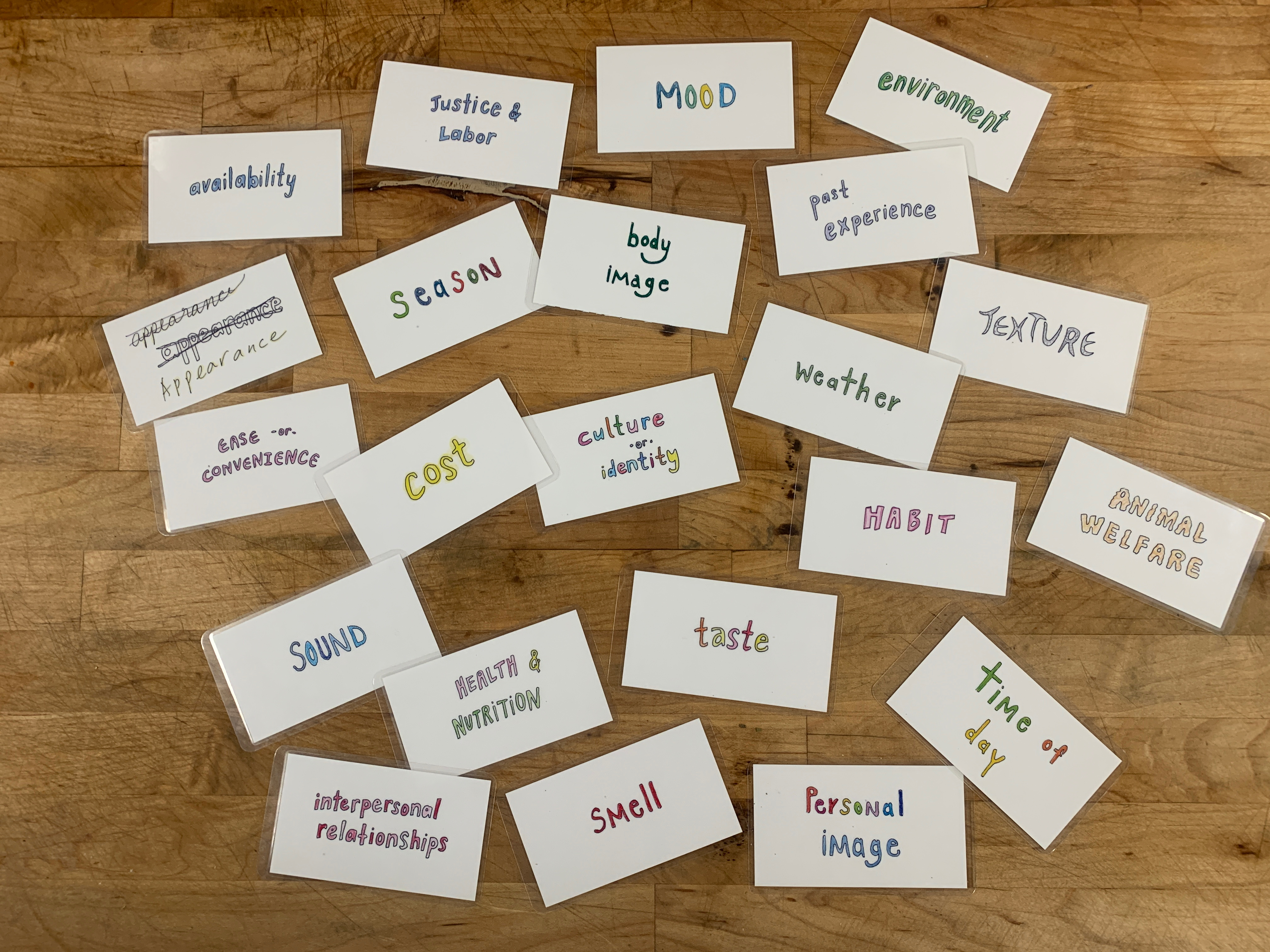The cards in our deck are:
- Animal Welfare – how a food or the processes involved in making it available to you impact animals
- Appearance – how a food looks
- Availability – how readily available a food is to you – how easy or difficult it is for you to get a hold of a certain food
- Body Image - the mental picture or image of your own body, and your thoughts, feelings, and emotions related to that picture or image
- Cost – how cheap or expensive a food is
- Culture or identity – what a food represents to you, or its connection to your culture or identity
- Environment – how the food or the processes involved in making it available to you impact the environment
- Ease or convenience – how easy and convenient it is to access or prepare a food, or the time and labor required to do so
- Habit – what you’re used to eating (or not eating) – your familiarity or routines with a food
- Health & Nutrition – how a food impacts your health
- Interpersonal relationships – when you make decisions about what to eat based on the desires, needs, recommendations or preferences of others
- Justice & Labor – the wages, working conditions and rights of the people involved in growing, processing, distributing or preparing a food
- Mood – how your mood impacts what you want to eat (eg. feeling down and wanting to eat something comforting from your childhood)
- Past experience – the memories or nostalgia you associate with a food or eating experience
- Personal image - how you feel you are perceived by others when you are eating a certain food.
- Season – how the time of year impacts what you eat
- Smell – how a food smells
- Sound – the sound a food makes while you’re preparing or eating it (eg. the crunch of biting a carrot or squeak of chewing certain cheeses)
- Taste – how a food tastes
- Texture – the physical feel of a food
- Time of Day – how the time of day impacts what you eat
- Weather – how the weather impacts what you eat (eg. hot soup on a cold day)





